UNICEF: Schools for Africa
Campaign Refresh
INTRODUCTION
Schools for Africa is a campaign initiated in 2004 through the vision of Nelson Mandela. He believed that through education, lives can truly be transformed, and thus, will help the society to advance. Schools for Africa was made possible through the partnership with Nelson Mandela Foundation, the Hamburg Society (now known as Peter Krämer Stiftung), and UNICEF. Big brands such as IKEA Foundation and Gucci are just two of the key contributors for the campaign.
THE ISSUE
For many children in Africa, especially Eastern and Southern Africa, education is something that is hard for them to reach (UNICEF, 2017). Sub-Saharan Africa is the country with the highest rate of children excluded from education. For example, 29.8 million children from sub-Saharan Africa were not in school in 2011, which meant that half of the 57 million children out of school globally were from Africa (UNESCO, 2013). Low quality education and the sheer amount of formal schools are also harboring challenges for improvement in the enrollments.
CAMPAIGN REFRESH CONCEPT
Out of Reach
The main concept of this campaign is Out of Reach — to show how hard it is for the children in Africa (primarily Sub-Saharan Africa) to acquire education. In short, education is out of reach for the children in Africa. When one think of having something out of their reach, one couldn’t help but feel really small. Translating the idea into visuals, the African children can be seen to be really small as compared to the items related to education — books, blackboard, pencil, and classroom chair, showcasing the idea of education to be out of their reach.
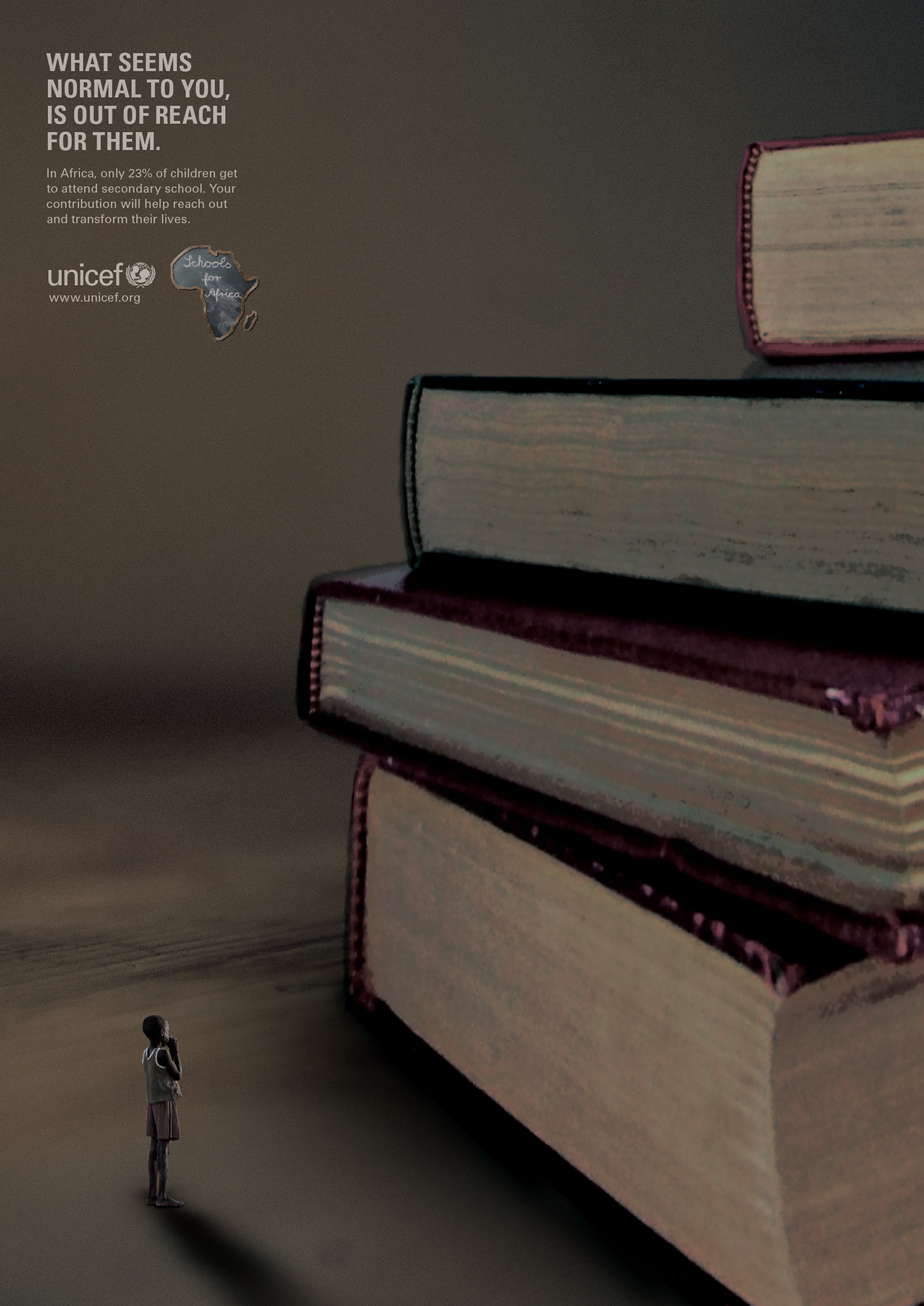



OOH APPLICATIONS
Through the research, I have found that UNICEF is not an organization that would promote their posters in the form of billboard advertisements, thus for the OOH applications, the campaign is applied only in subway stations and bus stops. The more prominent part of the campaign would be through the ambient medias.


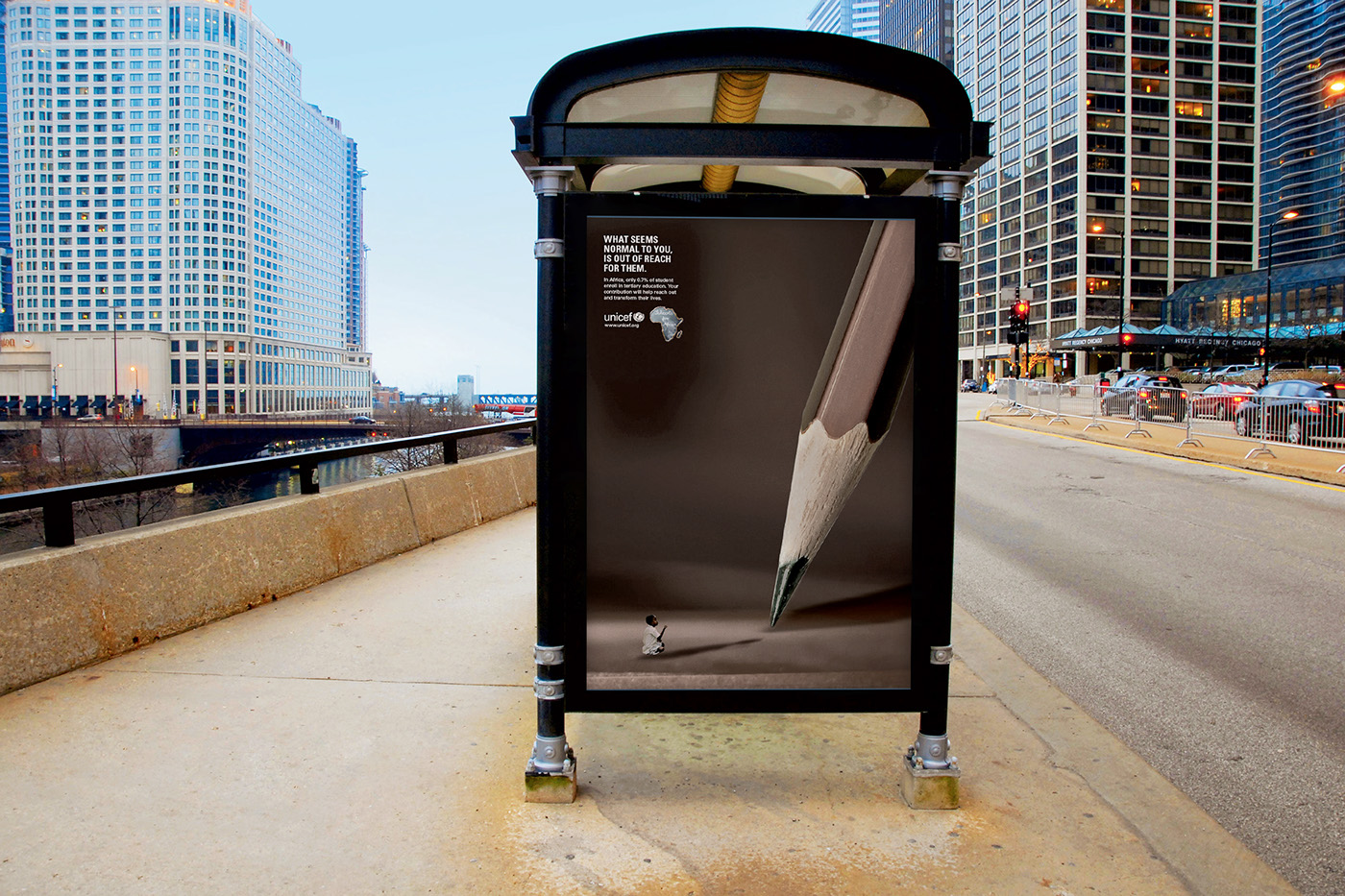
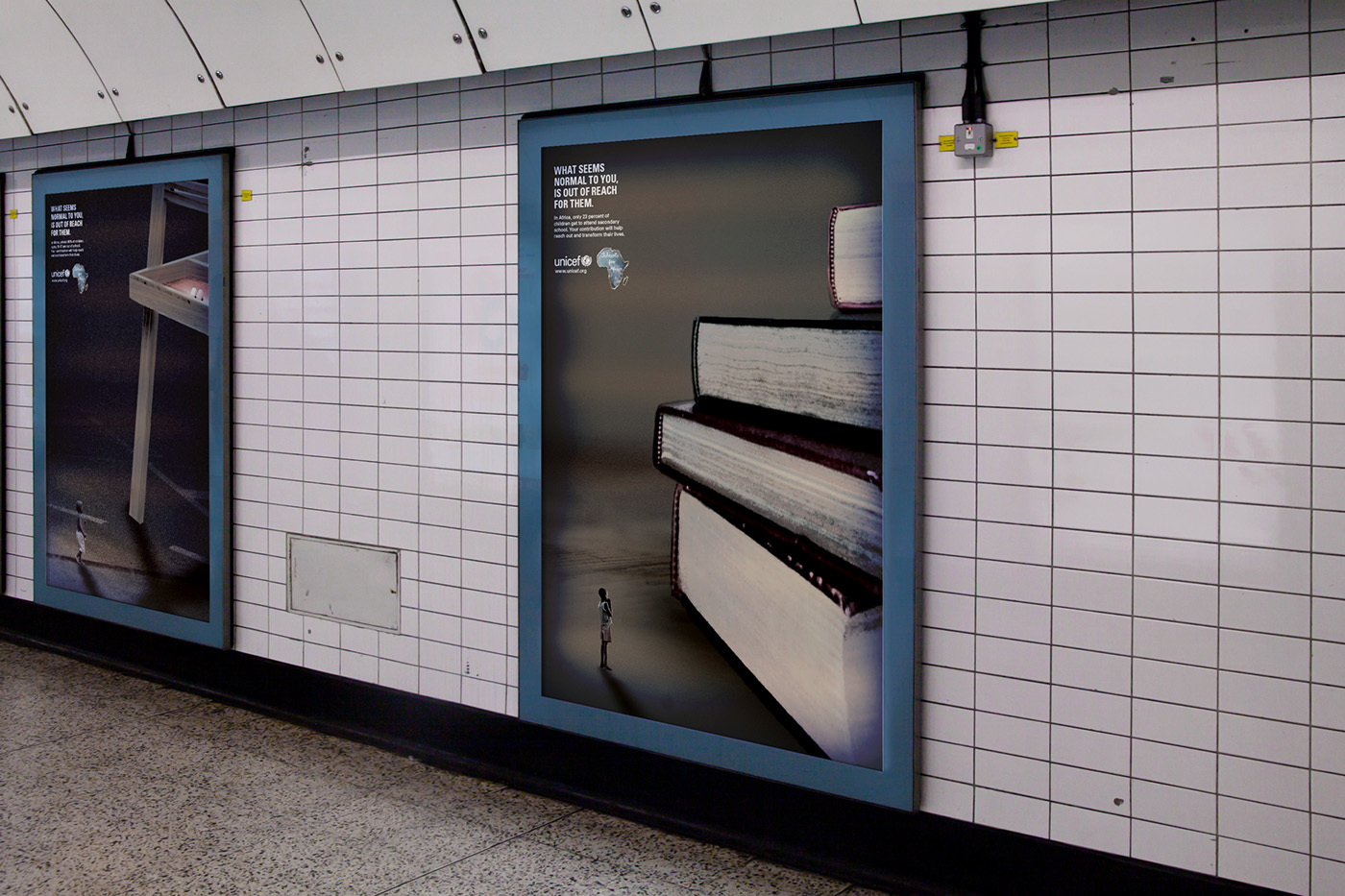
AMBIENT MEDIAS
In this campaign, ambient medias play an important role to showcase Schools for Africa, along with the length of which the campaign idea can be further expanded. As the original campaign was based in Germany, the ambient medias are thus, primarily focused in the areas of Germany.
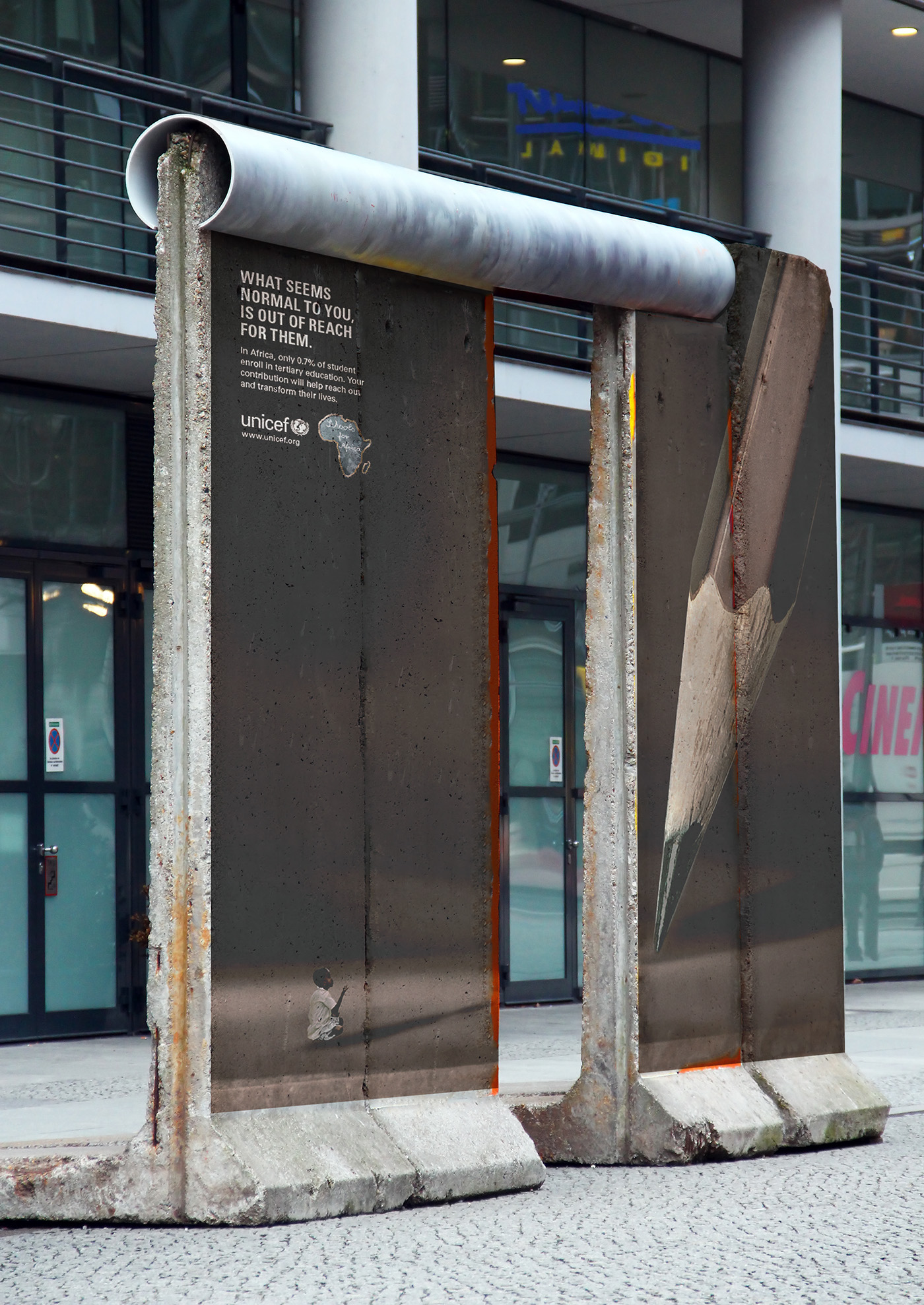
This is one of the Berlin Wall Fragments At Potsdamer Platz, Berlin, Germany. There are graffitis and murals on the fragments, and by showing the visual through the seperated mural, it better enforces the idea of education being out of reach for the children in Africa.

Altes Museum is the oldest museum in Berlin, and is listed as part of UNESCO’s heritage site. Museum is a place where the public go to learn, explore and/or understand more about the world. As part of the campaign, a sculpture of giant books would be located in front of the museum, where it would likely attract the public's attention and ultimately, raising more awareness for the cause, yet without too much enforcements.


To establish the connection between the railway and the campaign, the copy of this ambient reads: “In Africa, children have to walk over 10 miles to reach their school. Your contribution will help reach out and transform their lives.”

As part of the campaign, this pencil case, containing pencils forming the visual, will be given out to the public. This will serve as a reminder that even the simplest thing such pencils, can be a luxury for the children in Africa.
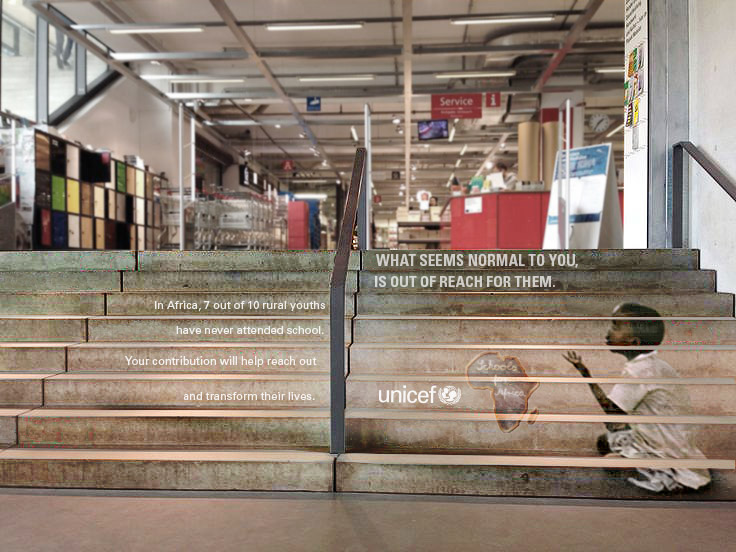
Modulor is one of the most popular stationery stores in Germany. By partnering up with Modulor, the campaign would be strategically placed inside their Berlin store. This stair leads up to the store, thus, it would be less likely missed.
The publication showcases the research and development of the UNICEF Schools for Africa campaign refresh.






